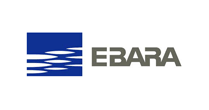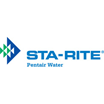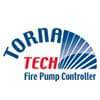Did you know there were 16,500 office and store fires in the United States in 2020, resulting in $932 million in direct property damage? Ensuring the safety of your business, employees, and assets is paramount in today’s fast-paced business world. Ignoring fire safety can have catastrophic consequences, like property damage, financial setbacks, and even loss of life. This is why taking Connecticut fire pumps and safety inspections is important!
Let’s explore the significance of commercial fire safety inspections, what they entail, and how your business can benefit from CT fire pumps.
What is Commercial Fire Safety Inspection?
The fire safety inspection is the regular assessment of workplace fire equipment to help businesses ensure their reliability in maintaining fire safety. It requires an inspecting team to give a detailed report on the fire protection system and its potential flaws and solutions. Conducting preventive commercial fire safety inspection helps you:
- Create a fire-safe workplace
- Cut insurance costs
- Boost employee performance
- Improve the value of the business
What can be the Cons of Neglecting Commercial Fire Safety?
Neglecting commercial fire safety inspections and CT fire pumps can severely affect businesses. The loss of lives and injuries can be devastating. Some other potential cons of neglecting commercial fire safety include:
- Reputation damage: Fire incidents can tarnish a business’s reputation, leading to a loss of trust among customers, suppliers, and stakeholders.
- Business interruption: Fires can disrupt business operations, leading to downtime, loss of revenue, and decreased productivity.
- Emotional toll: Fire damage can have a profound emotional impact on individuals directly affected, as well as their families, colleagues, and the broader community.
- Regulatory consequences: Failure to comply with fire safety regulations can result in legal and regulatory repercussions for businesses. This may include fines, penalties, and legal actions from regulatory authorities or affected parties.
- Financial impact: Recovering from a fire can financially drain businesses, particularly those without adequate insurance coverage. The cost of repairing or replacing damaged property, equipment, and inventory can be substantial.
How Often Commercial Fire Safety Inspection should be done?
According to the NFPA standards, inspecting a fire protection system at least once a year is essential. However, the inspection frequency can vary per your local or state code. So, there is no standard frequency for commercial fire safety inspection. The main components of commercial fire safety inspection include:
- The fire alarm system detects smoke and alerts the occupants of the fire
- Fire sprinklers that need regular maintenance to ensure that their smoke detection feature is working optimally
- The fire pump works along with the sprinklers to supply water for putting off the fire
Connecticut Fire Pump: A Crucial Aspect of Fire Safety
CT fire pumps play a crucial role in commercial fire safety, offering robust protection for businesses against fire hazards. Read on to discover how they contribute to safeguarding your business during an event of fire:
1. Reliable Fire Suppression
These fire pumps are designed to provide dependable water pressure for fire suppression systems, such as sprinklers and standpipes. They ensure adequate water flow is available to control and extinguish fires effectively. This will help you minimize property damage and protect lives.
2. Compliance with Regulations
Many jurisdictions require commercial properties to install fire pumps to comply with building and fire safety codes. Connecticut fire pumps meet these rules and regulations, reducing the risk of fines or penalties for non-compliance. Regular inspections of these pumps are essential to meet regulatory standards.
3. Enhanced Fire Protection
CT fire pumps are designed to deliver high-pressure water flow, making them suitable for various commercial and industrial applications. Whether it is a large warehouse, office building, or manufacturing facility, these pumps provide the necessary firepower to combat fires effectively and prevent them from spreading.
4. Reliability and Durability
By investing in Connecticut fire pumps and conducting regular inspections, businesses can enjoy peace of mind knowing they have robust fire protection measures. Plus, these pumps are engineered for reliability and durability, ensuring consistent performance under demanding conditions.
Knowing your business is safe after the fire safety inspection gives you peace of mind. CT fire pumps are essential for commercial fire safety systems, providing reliable and effective fire suppression capabilities. By ensuring proper installation, maintenance, and inspection of these pumps, businesses can enhance their fire protection measures and minimize the risk of fire-related losses.
Callaghan Pump offers a full range of Connecticut fire pumps for industrial, commercial, and residential applications. If you have any questions or want to invest in CT fire pumps, contact us today!














